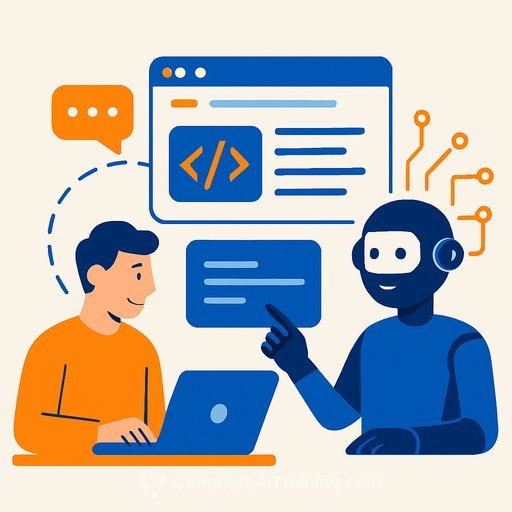How Good Is AI At Software Application Development?
Software has always flirted with self-replication. From quines to computer viruses, code can generate more code. Now, agentic AI and LLMs are starting to write, refactor, and validate software at scale.
The short answer: AI can be very effective, but only when you give it the right context, constraints, and checkpoints. Treat it like a junior teammate with superhuman recall and variable judgment. Guide it, verify it, and wire it into your workflow.
Today's Reality: Experimentation Turning Into Implementation
Teams are testing AI coding tools to improve velocity and coverage. When output disappoints, the issue is often usage, not model capability. Vague prompts and missing context lead to weak results.
As Yrieix Garnier, VP of product at Datadog, notes, asking a model to "think harder" mostly spends more tokens. Precision, structure, and guardrails matter more than intensity.
Prompts That Actually Work
- State the objective, constraints, and tech stack. Include architecture specifics, versions, and frameworks.
- Provide only relevant context. Respect context limits to avoid noise and drift.
- Ask for a step-by-step plan before any code. Require the model to explain reasoning and chosen trade-offs.
- Define done criteria: target files, functions, tests, performance bounds, and security checks.
- Instruct it to reference concrete artifacts (paths, schemas, APIs) and cite assumptions.
Guardrails That Prevent Rework
- Planning gate: approve the execution plan before generation or modification.
- Automatic checks: linting, type checks, unit tests, policy-as-code, and SAST on every patch.
- Sandbox runs: execute in a safe environment with mock services and seeded data.
- Drift control: require diff previews and rollback steps for infra and config changes.
- Cost control: set token and time budgets; fail fast on low-confidence outputs.
Working With Context Windows
Models summarize when they hit context limits, which can drop critical details. Keep a distilled implementation plan that travels across windows. Use a concise "source of truth" for decisions, constraints, and open questions.
Use AI To Explore Alternatives
Don't prototype every path by hand. Have the model propose multiple approaches with trade-offs, rough implementations, and test stubs. Benchmark quickly, then double down on the best option.
Ask the model to stress-test your plan: what's missing, what breaks under load, what fails in edge environments, and what's insecure by default.
From Code Companion To Workflow Enabler
The real jump happens when AI tools interface with your systems. For infrastructure work (e.g., Terraform), the agent needs an accurate view of current state to avoid conflicts and drift.
That means permissions, read-only access to the right data sources, and integrations across logs, metrics, traces, and config. With that setup, assistants can speed incident response, reduce time to resolution, and keep changes grounded in reality.
A Simple Implementation Recipe
- Define the task and constraints. Add success metrics and risks.
- Request a plan and reasoning. Review and edit it.
- Generate code in small, testable chunks. Enforce diffs and commit messages.
- Run checks: linting, types, unit/integration tests, security scans.
- Benchmark alternatives for key paths. Pick the winner with data.
- Stage in sandbox, then progressive rollout. Monitor SLOs and error budgets.
- Document decisions, assumptions, and rollback steps. Keep a living plan.
Risks You Must Own
- Hallucinations and subtle logic errors. Mitigate with tests and reviews.
- Security exposure: secrets, tokens, PII. Lock down prompts, logs, and outputs.
- Licensing and provenance. Track source suggestions and dependencies.
- Infra drift. Always diff and verify real state before apply.
Metrics That Tell The Truth
- Lead time for changes and PR cycle time.
- Change failure rate and rollback frequency.
- Coverage, flake rate, and defect escape rate.
- MTTR on incidents and on-call load.
- Token usage and cost per accepted line/change.
Useful References
- Quine (computing) for historical context on self-referential programs.
- Terraform documentation for state, drift, and plan/apply workflows.
Level Up Your AI-For-Code Practice
- Top tools for generative code to evaluate your stack fit.
- AI certification for coding to standardize team skills and workflows.
Bottom Line
AI is effective at software development when you provide structure, context, and checkpoints. Use planning gates, enforce guardrails, and integrate with observability and infra state to keep outputs grounded.
Treat AI as a collaborator across the full lifecycle-research, planning, reviews, rollout, and maintenance. That's where it compounds value.
Your membership also unlocks:






